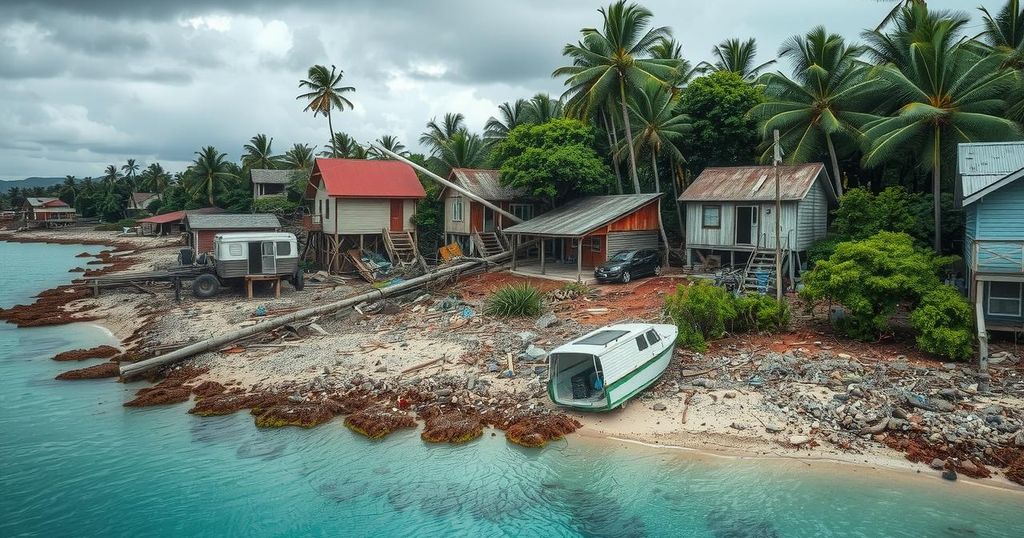Destruction in Mayotte Due to Cyclone Chido: A Summary of Events and Impact
Cyclone Chido struck Mayotte on December 14, 2024, causing extensive damage to the landscape and infrastructure. Satellite images reveal substantial vegetation loss, especially on elevated areas. Agricultural crops were destroyed, threatening food supplies. The cyclone also impacted critical infrastructure, disrupting essential services for the local population.
On December 14, 2024, Cyclone Chido struck the island of Mayotte, situated in the southwest Indian Ocean, leading to extensive destruction across the territory. The cyclone’s hurricane-force winds uprooted trees, blew off roofs, and downed utility poles, resulting in a stark transformation of the once lush landscape into a barren, brown expanse. Satellite images from Landsat 8 reveal the severity of the damage, with a notable contrast between conditions before and after the storm. The Operational Land Imager (OLI) captured an image of Grande Terre, the main island of Mayotte, revealing significant vegetation loss two weeks post-cyclone, particularly on the hillsides adjacent to Mamoudzou, the capital city.
Ecologist Jess Zimmerman from the University of Puerto Rico emphasizes that, while his research primarily focuses on hurricanes in the Atlantic, similar destruction occurs in other basins, including the southwest Indian Ocean. Zimmerman pointed out that the cyclone’s impact on the vegetation was pronounced in the areas at higher elevations, as these locations are more susceptible to wind damage. Alongside the destruction of the natural environment, reports from Agence France-Presse indicated that a historic 300-year-old baobab tree fell onto a restaurant, exemplifying the cyclone’s catastrophic toll.
The destruction extended to agricultural lands, as banana trees and various crops were ravaged, jeopardizing food supplies for local communities. Moreover, Cyclone Chido caused significant damage to essential infrastructure, including airports, hospitals, and roads, which hindered access to electricity, water, and communication services. The European Commission’s assessments revealed that the northeast region of Grande Terre was particularly affected, highlighting the urgent need for recovery efforts in the affected areas.
Cyclone Chido exemplifies the devastating potential of tropical cyclones, particularly in regions vulnerable to severe weather events. Mayotte, a French territory, faced significant ecological and infrastructural challenges as a result of the cyclone’s extreme wind and rain. The impact of such natural disasters is further exacerbated by elevated terrains where vegetation is more susceptible to storm damage. Understanding the ecological consequences is essential for strategizing recovery and enhancing resilience against future events.
In summary, Cyclone Chido’s passage through Mayotte on December 14, 2024, resulted in widespread devastation, affecting both the natural landscape and critical infrastructure. Significant loss of vegetation, including historic trees and agricultural crops, coupled with damage to essential services, underscores the urgent need for recovery efforts. The incident highlights the vulnerability of island communities to severe weather events and the importance of ecological studies to inform disaster preparedness and response strategies.
Original Source: earthobservatory.nasa.gov




Post Comment